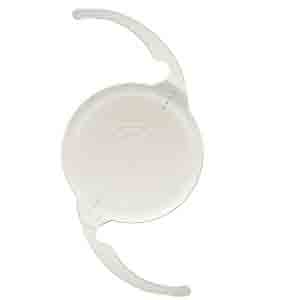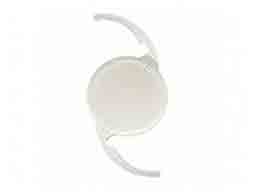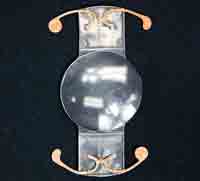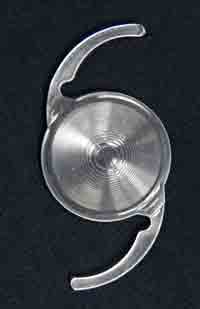
PIE
New technology enables you to see near & far without glasses in each eye!
See Far and Near and everything in between in each eye without the need of visual aids, for
the rest of your life!
Say Bye Bye to Trifocals, Bifocals and goodbye to readers too.
While bidding adieu, say good riddance to contact lenses also.
Binocularity is better than monovision.
PIE outshines Lasik Vision.

Imagine waking up in the morning and looking at the alarm with your naked eyes. You then
grab your smartphone to check your email and the current status updates from your friends
on Facebook. While eating breakfast you go through the newspaper. Continuing the
momentum, you drive without any glasses to work and then go on to play golf. After playing
the best golf of your life, you get a quick swim in, which is a pleasure without glasses or
contacts. On your way home, you pick up groceries, without squinting to read labels. While
catching up on the bedtime reading, you ask yourself why you did not get this astounding,
rejuvenating treatment before.
Take the PIE Quiz to get Free Book!
Start Quiz
Learn all about the vision improving treatment, in an easy-to-understand book.
SPECIAL PRICE $49.95
HERE, JUST $39.95.
Advantages of Presbyopic Implant in Eye (PIE) surgery
PIE treatment treats the ailment known as Presbyopia. Let us understand the significance of
each word in this acronym. The expanded form of PIE is “Presbyopic Implant in Eye.” The
term has nothing to do with the mathematical term pi used in mathematical calculations.
Presbyopia is a natural change in the natural lens of the eye that happens with time and also
affects one’s ability to see near objects. Generally, around age forty-five years, people start
to experience this condition and it continues to progress as we age. To correct this condition,
most people start to wear reading glasses.

Even those individuals that have undergone Lasik earlier in life feel the need to reach for
reading glasses. People who already were wearing glasses would graduate to more
troublesome bifocals or progressives. Presbyopia makes it progressively tough to focus on
objects near, intermediate and far. Presbyopic, in the term “Presbyopic Implant in Eye”
implies that it cures presbyopia.
The implant is a newer, artificial, biocompatible lens replaced in the space of the remaining
natural lens, after the old contents have been removed. Biocompatible means that the body
will accept it and neither develop any type of allergies, nor reject the new lens. Presbyopic
implants are specialized, groundbreaking lenses developed by optical engineers making use
of the new techniques of Nano engineering.
The implants enable the eye to see near, intermediate and far. They are of different
sizes and shapes. PIE can be defined as exchanging the contents of an inadequately
functioning, old natural lens with a newer artificial inert presbyopic implant, which can help
us see at whatsoever ranges and decrease, or perhaps get rid of, dependency on glasses or
contact lenses.

PIE is the creme de le creme of techniques to revitalize aging eyes. It is superior to other
approaches which combat the effects of taking way too many revolutions around the sun.
PIE is a lot more helpful than glasses!
- Glasses can get hazy/foggy in the rain
- Swimming with glasses is near impossible
- Scuba diving is not enjoyable
- You keep forgetting where you kept your glasses
- Pet dogs like to use them as chew toys
- Your grandchildren could scrape them
- You can fill in the blank with your own issues with glasses here ______.
It’s safe to state that PIE overcomes all these problems.
PIE provides binocularity which is better than monovision
Monovision is a procedure of setting the focus of one eye on near objects and the focus for
your other eye on far-away objects. In doing this, your brain combines both images to
produce a clear picture. This is a relic from the twentieth century. The primary disadvantage
with monovision is that one loses one’s binocular vision. PIE allows you to keep your
binocular, depth of field vision.

PIE is superior to multifocal contact lenses
Multifocal contact will move with every blink. The image delivered to the brain rises and falls,
confusing the brain. That is why many people are unable to adjust to multifocal contact
lenses. Presbyopic implants are stable and do not move. The brain neuro-adapts to the
lenses, improving vision. Contacts can lead to harmful corneal infections as long as you
wear them. Presbyopic implants are not exposed to the elements or germs.
Detection Analysis: IOL Master or Lenstar bio-metric devices measure the length and
shape of the eye. They use advanced formulae to help determine the power of the
Presbyopic Implant needed to get the optimal result.
Equipment for Surgery: Current generation devices like Centurion by Alcon, Stellaris Elite
by Bausch & Lomb and Whitestar Signature Pro by Johnson & Johnson are necessary.
Variants in procedure: Toric Presbyopic Implants can deal with the existing astigmatism at
the same time. Istents, or similar devices, might be used to treat mild to moderate glaucoma.

Symptom: To treat simple presbyopia or presbyopia connected with myopia, hyperopia or
astigmatism.
Contraindications: Severe macular degeneration, advanced glaucoma with visual field
defect and proliferative diabetic retinopathy.

Types of PI or Presbyopic Implants
There are 4 classes of FDA approved PI. These are Accommodative, Extended Depth of
Field (EDOF), Trifocal and Multifocal. The table gives an introduction of different types of
available presbyopia implants. We will take a look at them carefully.
Accommodative PI
This class of PI were the very first to be authorized by FDA in 2005. They heralded the
introduction of PIE. Crystalens was the first out of the stable. It had various changes till it
developed into Crystalens HD and also now we have Crystalens AO and Trulign. They are
made from silicone. Crystalens AO has aspheric optics whereas Trulign has aspheric optics
and built-in astigmatism correction. They work by assuming a curved shape in the eye,
increasing the range of focus. This shape and the special design of the lens may also permit
it to move forward and backwards, imitating the natural lens. This lens has proved very
valuable in patients that have had previous eye surgical treatment like Lasik vision
correction, Radial Keratotomy and other corneal procedures.
Crystalens is an accommodative posterior chamber intraocular lens made of silicone. It is a
modified foldable plate haptic lens with hinges across the plates adjacent to the optic. Two
adaptable colored polyamide loops are affixed to the distal extremity of the plates. It has a 5
mm optic zone, exceptional contrast sensitivity, and fewer issues with halos and glare across
a range of vision. The lens moves mechanically to generate 1.0 diopter of monocular
accommodation. Safety profile is good, as hinge of one billion cycles movement at 10 cycles
per second has been documented without deterioration. Approximately 95% of visible light is
transmitted. It transmits all light rays, independent of pupil size. This aberration free aspheric
lens enables great contrast sensitivity. Patients with astigmatism can tolerate this lens better.
It likewise permits some torque without affecting vision. It should not be placed in the ciliary
sulcus and should to not be implanted if the bag is not intact or there is any zonular rupture.
Fig.: Crystalens Trulign accommodative implant

Extended Depth of Field (EDOF) PI
They remain in a class of their own. They resemble multifocal PI in appearance, however
function on a different optic principle. They increase the natural depth of field. It gives a
continuous visual field, though the range is not as extreme as in multifocal. Symfony and
Symfony Toric are the two contenders here. As you may have guessed from the names,
Symphony Toric can additionally fix astigmatism. Hence, they find excellent use in eyes with
astigmatism. EDOF are made use of as an alternative to Crystalens in previously operated
eyes. They can also be used when trying to replicate an patient’s monovision and in
amblyopic (lazy) eyes.
Symfony & Symfony Toric have a 13mm overall length with a 6mm optical zone. They have
a biconvex, wave-front designed anterior aspheric surface. The posterior achromatic
diffractive surface is designed to reduce chromatic aberration which enhances the contrasts
of images. The echelette feature extends the range of vision. The toricity is added to the
anterior surface of the Symfony toric implant. It is essential to keep in mind, that unlike other
multifocal lenses, Symfony does not have different foci for distance, intermediate or near,
however a continuous range of vision. It has frosted, continuous 360-degree posterior
square edges. There are no glistening’s associated with this IOL material. The Symfony toric
comes in 4 different powers.
Fig.: Symfony toric lens
Multifocal PI
They are really bifocal, however were classified multifocal to differentiate them from bifocal
glasses and contact lenses. Their mechanism of action is entirely different from bifocal
glasses. In bifocal glasses, the top section is for distance and lower for near. These are
refractive lenses. This technique was attempted in implants in the previous century but was
not successful.
Multifocal PI can be either refractive or diffractive in structure. The refractive multifocals, like
Array, have been discontinued. The diffractive multifocal implants have apodiazations
(concentric rings of different heights) which split incoming light. They have a focal length for
distance and one for near with an overlap for middle. One does not have to turn their head to
see near objects. They are best for near and distance vision. Restor as well as Tecnis are
the two lenses in this class.
Tecnis Multifocal
Tecnis is constructed from UV obstructing hydrophobic acrylic. It is biconvex like a
magnifying glass with diffractive rings on the posterior surface. It is manufactured in a
proprietary ruby cryo-lathing procedure. It indicates that the material as well as form are
created in the exact same step. Being clear, it transfers more light, but increased number of
rings might trigger glare. The near addition can be a +4 D which is maximized for those
favoring near-vision tasks like reading and knitting. It provides customised clarity at a
theoretical reading distance of 33 cm. + 3.25 D is much better for longer reading ranges,
such as reading newspapers. It provides customised clarity at a theretical reading range of
42 cm. A +2.75 D is best for intermediate vision tasks like computers. It delivers customised
clarity at a theoretical reading distance of 50 cm.
Tecnis Toric 11
The most recent technology corrects for astigmatism. Its sticky haptic technology protects
against spinning or movement of the implant.
Fig.: Tecnis Multifocal Implant
Restor
This acrylic IOL has a central optic and two arms, or haptics, for stabilization. It can be a one
piece that is implanted into a bag or a three piece, which is implanted in the bag or ciliary
sulcus. The anterior apodised refractive optic that creates the diffractive zone is found within
the central 3.6 mm optic zone of the lens. It has 9 concentric steps of reducing heights
allocating energy based on lighting conditions and activities. This lens does not call for any
kind of ciliary muscle activity to function. The +3.0 diopter on the lens yields a power on the
cornea equal to using +2.5 readers, which enables near vision. A refractive area that guides
light to the distal focal point surrounds the diffractive region. The asphencity of the optic
makes up for the corneal spherical aberrations.
The chromophore filters blue light yet clinically might affect color vision as well as the quality
of distance vision. People with this lens need even more light in dark conditions. There is a
clear center zone for intermediate vision as well as a peripheral clear zone for distance.
Restor Activefocus
This lens is a modification of Restor. The added power for near is just +2.5 D. The central
clear area is focused for distance rather than intermediate, so the patient gains intermediate
vision at the expense of near vision.
ROBIN GWYENNE
“It is genuinely a wonder. I had been informed several times there was no hope for my right
eye after an orbital surgery. Dr. Khanna utilized his magic with Presbyopic Implants and now
I see 20/20 or far better at any distance.”
Trifocal PI
Presently we have just Panoptix and astigmatism remedying Panoptix Toric. These PIs have
apodiazations or rings in their centre comparable to Restor multifocal. Optical engineers can
regulate the height of the rings and also distance in between rings to create varying focal
length for every zone. The unique elevations of the rings of this lens enable the inbound light
to be split into three focii. One for distance, second for intermediate and third for near
objects. This lens is good for patients who commit the majority of their time to computers and
intermediate vision, like financial analysts and computer programmers.
A doctor that is a PIE expert needs to be competent in all types and kinds of presbyopic
implants. Success is accomplished when the patient’s goals and needs are comprehended
and the most effective PI for those needs is implanted. Individuality, work, leisure activities
and sporting activities all affect the decision for the final implant chosen. This might even in
some cases include implanting a different type of PI in each eye.
Panoptix Trifocal
This is a single piece biconvex lens with a main optic constructed from a high refractive
index hydrophobic acrylic material capable of being folded up without damage before
insertion with a smaller cut. The central 6.0 mm optic has two haptics on either end,
providing a general lens size of 13 mm. In the main 4.5 mm of the optic, there is a diffractive
portion which splits the light to produce +2.17 D intermediate (+1.65 D at cornea) as well as
+3.25 D near (+2.35 D at cornea) add power. The front surface of the lens has a negative
spherical aberration to counteract the positive ones generated from the cornea.
Panoptix is in fact a quadrifocal lens which has been modified to act like a trifocal lens to
improve distance vision. In simple terms, it means it gives a more continuous visual field.
It comes in 2 colors, yellow and white. The yellow color is blue light blocking and in theory
protects the macula. In the real world, it affects the clarity of vision, particularly in dark light.
Thus, the clear Panotix model is better liked.
Fig.: Panoptic trifocal
Table: Comparison of various Presbyopic Implants in Eye
Comparison of various Presbyopic Implants in Eye
Advantages Disadvantages
Crystalens Clear vision for 2.5/3 zones. Works in post RK, post Lasik
and early macular degeneration
May need glasses occasionally. Can develop Z
syndrome.
Restor Full range of vision (3/3) Extra light for reading. Waxy distance.
Tecnis Full range (3/3) Initial glare & adjustment period for computers
Symfony Stable lens. Clear vision for 2.5/3 zone. Cobweb against lights
Symfony Toric Can correct astigmatism Susceptible to rotation which can change
astigmatism
Panoptix Best intermediate with full range Material can develop glistenings
Panoptix Toric Can correct astigmatism Rotation less likely but can still affect result
Type of Procedure PIE Lasik
Zone of Vision Distance & Middle
& Near Vision Distance or Middle or Near Vision
Duration
Permanently glasses free Need for glasses by age 45
Binocularity
Yes No
Corrects Extreme Refractory
Errors Yes No
Prevents Cataracts Yes No
Dry Eyes Does not cause Usually induces
Abnormal Cornea Yes No
LASIK for Reading or bifocal Lasik by Presbyopia consultant surgeon
In certain patients, under fixing one eye can help at least computer vision. If the dissimilarity
in the end resultant powers is much less than 1.5 D it is called blend vision. If the difference
is exaggerated to 3 D it is termed monovision. In such instances, one eye is for near and
cannot see far at all. The other eye sees far and cannot see near. It seems great in theory,
but in reality, binocularity or depth perception is lost, intermediate vision might suffer too.
These extreme differences may not be well tolerated. Only 20 % of patients might even like
monovision. Others might experience lightheadedness, “jump in” images and confusion.
Before attempting blend vision or monovision, the ability to adapt should be evaluated
extensively by trial frames in office and a contact lens test for a couple of days in the house
and at work. It has been customary to target the leading eye for distance and non-dominant
eye for near vision. It is wise to try to see if this pattern works best for the patient or if the
contrary pattern is much better. That is, non-leading eye for distance and dominant eye for
near vision. In patients older than 45, that have lost the capacity to read at near, it might not
produce happiness. A 52-year-old restaurant owner with -3 D glasses made a decision to
have Lasik eye surgery at a high-volume center. After the surgery, he was really depressed.
He could not see the sales register, nor the menu which was his job 10 hours a day. All that
happened was, he traded distance glasses for reading glasses. Lasik eye surgery resembles
fire, if made use of properly it will produce wonderful outcomes. If used incorrectly, it can
burn. The doctor needs to use it judiciously.
This is the advantage of PIE. Vision in all 3 zones is achieved while retaining depth
perception. To carry out Lasik, a flap requires to be made either by a femtosecond laser or
microkeratome. The flap fashioned in Lasik has some disadvantages. It compromises the
corneal surface and interferes with the corneal nerves. Lasik cannot be done on very thin
corneas, or abnormally shaped corneas, for fear of causing the cornea to bulge outward.
Damage to the central corneal nerves might induce dry eyes and make pre-existing dryness
worse. PIE can still be carried out on such thin or dry corneas. One more advantage of PIE
over Lasik is that the center of the cornea is not violated.
After Lasik, the vision might change and aggravate as the natural lens goes through
changes. A patient would need to change glasses to see much better at the specific
distance, the vision gets changed. Lastly, after Lasik, when one still develops cataracts, and
one would need cataract surgical treatment. PIE stops the fluctuation in vision and also
development of cataracts by getting rid of the useless natural lens.
Lasik cannot be performed in high hyperopes, or farsighted individuals, more than 6
diopters. These numbers are not even authorized by FDA. Likewise, patients with extreme
nearsightedness, over 10 diopters are not candidates for Lasik. In these circumstances, PIE
triumphs over Lasik.